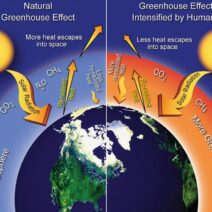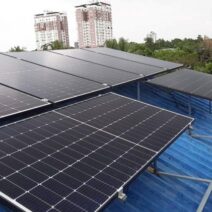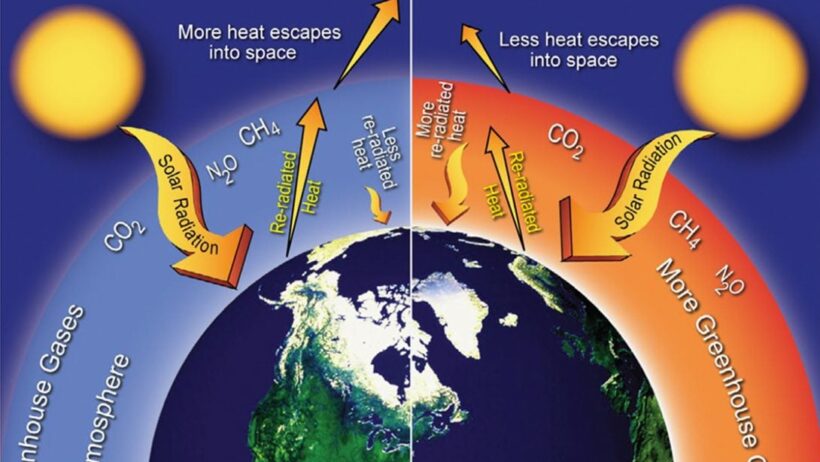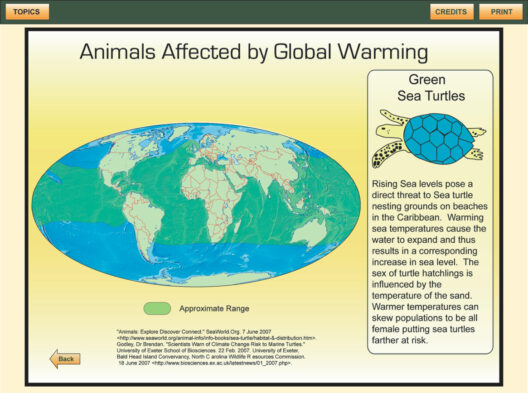In the vast symphony of Earth’s atmosphere, methane (CH₄) and carbon dioxide (CO₂) play critical, yet contrasting roles akin to the lead violin and the piano. Each note they emit contributes to a haunting melody of change, a melody that reverberates far beyond the confines of our immediate surroundings, swelling into a cacophony of climatic disruption. Understanding how these gases induce global warming requires a dive into the intricacies of the greenhouse gas effect, a phenomenon that transforms our planet into a veritable greenhouse, trapping heat and fostering an environment increasingly hostile to life as we know it.
At its core, the greenhouse gas effect finds its roots in the delicate balance of energy exchange between the Earth and the sun. Solar radiation bathes the Earth, providing the energy necessary for sustaining myriad life forms. While some of this radiant energy penetrates the atmosphere, nourishing the surface, a significant portion is reflected back into space by clouds, ice, and land surfaces. It is here that the character of methane and carbon dioxide becomes pronounced.
Carbon dioxide, a pervasive entity, is akin to a sturdy brick wall. Once it enters the atmosphere, CO₂ molecules become trapped, emanating warmth and thus preventing it from escaping back into the cold cosmic embrace of space. The wall that CO₂ builds is not impervious; it allows sunlight to enter but challenges the exit of heat, forcing it to linger within the atmosphere. This imbalance is exacerbated by anthropogenic activities. Fossil fuel combustion, deforestation, and various industrial processes continuously augment CO₂ concentrations, with levels now hovering around 420 parts per million—an unprecedented value in geological history.
In stark contrast, methane, the silent but potent heavyweight of greenhouse gases, can be visualized as a shimmering veil. Though less abundant than carbon dioxide, methane is remarkably effective at trapping heat, with a global warming potential several dozen times greater than that of CO₂ over a 100-year timescale. This ephemeral veil is released through both natural processes, such as wetlands and ruminant digestion, and human activities, including agricultural practices and landfills. The average atmospheric concentration of methane has more than doubled since the pre-industrial era, becoming a formidable player in the climate crisis.
Exploring the greenhouse gas effect reveals a complex interrelationship between these gases, the Earth’s infrastructure, and climate. Solar radiation strikes the Earth, warming its surface. This thermal energy is then re-radiated in the form of infrared radiation. While CO₂ and methane allow sunlight to enter, they act as barriers against this outgoing radiation, trapping heat in a manner not dissimilar to a heavy wool blanket enveloping the Earth. As the concentration of these gases increases, so too does our planet’s temperature—a process referred to as global warming, setting off a chain reaction that meddles with the climate systems that maintain our environmental equilibrium.
The direct implications of this warming are striking. Rising global temperatures lead to melting glaciers and polar ice, contributing to rising sea levels. Oceanic ecosystems are disturbed as water temperatures increase, leading to coral bleaching and species migrations. Extreme weather events have become more frequent and severe, as the atmosphere retains more moisture—a byproduct of rising temperatures. Floods, droughts, hurricanes, and wildfires all intensify, revealing our planet’s vulnerabilities and testing human resilience.
We stand at a crossroads, where the fate of future generations hinges on our ability to address methane and carbon dioxide emissions. The solutions lie not only in technological innovations but also in societal shifts towards sustainability. Transitioning to renewable energy sources like solar and wind can significantly curtail CO₂ emissions, while practices such as reducing food waste and optimizing agricultural methods can help mitigate methane output. Reforestation initiatives bolster natural carbon sinks, absorbing CO₂, while the development of methane-reducing technologies in agriculture presents an immediate avenue for improvement.
Furthermore, individual actions can fuel meaningful change. Advocating for policy reforms that promote carbon pricing or incentives for sustainable practices amplifies the collective voice. Awareness and education initiatives can transform consumer behavior, encouraging a shift away from fossil fuel-reliant practices. Simple lifestyle changes, such as opting for plant-based diets or utilizing public transport, can contribute to reducing both methane and carbon dioxide emissions on a local level.
Ultimately, the duality of methane and carbon dioxide as agents of global warming serves as a poignant reminder of our interconnected existence with the planet. They are not merely data points on a graph; they are symbols of choices made and consequences faced. The climate emergency demands our attention, and addressing methane and carbon dioxide emissions can lead us towards a more sustainable future. By understanding the role these gases play in the intricate dance of Earth’s climate, we can better position ourselves to respond. The awareness woven into our actions can, like a crescendo in a symphony, lead to a harmonious balance—the key to averting the adverse outcomes that threaten the delicate fabric of life on our planet.






